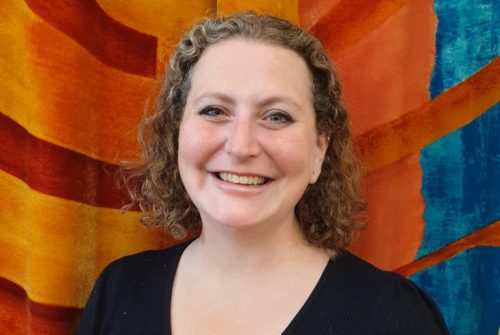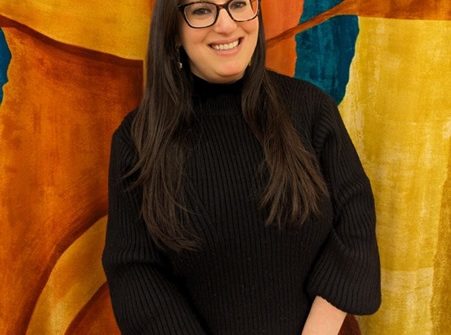Frank Curtis z”l, the late father of our much missed EHRS member Stephen Curtis z’’l admitted to me that he had not always been the upstanding citizen that I got to know. He was brought up in the East End of London in the 1930’s and when he was a young boy he and his friends used to be what was called in the Yiddish of the day “lobboses”. His favourite example of this comes from the Festival of Sukkot, the Jewish harvest festival which we are in the middle of celebrating today. On the festival, just as today, observant Jews build a Sukkah somewhere outside on their property. Elaborate or simple, as long as the sky can be seen through the roof, made in wood or other material and covered in leaves, flowers and fruit, they symbolise the makeshift shelters of the Israelites as refugees from Egyptian slavery wandering across the desert and they celebrate the harvest of the year by their decoration. Later today we will enjoy our Kiddush in the Sukkah which we built here at EHRS last Sunday.
With all of these Sukkot in people’s back yards in the part of the East End where our friend was brought up the temptation was rather too great for him and his lobbos friends. The fruit that hangs down from the roof of a well-made Sukkah was very attractive to boys in the depression era early years of the 1930’s. So he has to admit that they were delighted when Sukkot came along and, by scaling up back yard walls and other acts of derring do he and his friends were able to pinch an apple or two, or even a coveted orange from the orange groves of Jaffa in Mandate Palestine from the Sukkah decorations, and scoff them in the alleyway. One particular Sukkah was always especially well endowed with fruit each year and was a year by year target by the boys. That was until the year that the owner wised up to what was happening and he and his friends dropped down over the wall to discover that this year all of the fruit hanging down had been replaced by turnips, onions and carrots!
When I grew up the smell, the feel and the look of a Sukkah was always dominated by the freshness of nature. At Wembley Liberal Synagogue, the Sukkah pervaded the whole building as it was built in a side room to the Synagogue with a skylight. People brought greenery from their gardens, and we decorated with fruits which were then after Sukkot in those less health and safety conscious days, given to our local Jewish old age home.
It was the same at my first pulpit Synagogue, Woodford Progressive – the Sukkah was also inside the building – right beside the Bimah in fact and pervaded the whole sanctuary with its presence, reminding us of the nature celebration roots of the festival. During my time there we came to move it outside to the Synagogue courtyard to enhance its kashrut- and now it provides a yearly Jewish landmark on the road where the Synagogue stands.
Here at EHRS our Sukkah is put up by a large gang of volunteers and decorated by a hundred or more adults and children together. Some of the laurel that makes it beautful is grown here on the Synagogue grounds, the rest comes from the garden of a member, Annita Tischler. This year its theme is of the five senses – with a waterfall added so that there is sound. The fruit was brought by our children to Orot, our religious school on Sunday then hung together with fruit from our annual Sukkah decorating party. The decorated DVD’s glinting in the sun are junked copies of Bollywood movies. Nagila, our kindergarten, added giant fruit pictures made by the children.
This UK kind of Sukkah is not the way a Sukkah looks in the rest of the world. In the Southern Hemisphere most local fruit is out of season at this time of the year so in South Africa and Australia many decorate their Sukkah with pictures of the fruits of God’s earth, drawn by children. That was what I encountered to my surprise when I arrived in Cape Town for the beginning of my Sabbatical ten years ago on Sukkot where of course it was the tail end of winter, not of summer as it is here. In Israel many marpeset (balcony) Sukkahs are decorated with what seem pretty obviously to the British eye, Christmas decorations. Apparently the baubles and tinsel that Britain associates with Christmas are expecially popular for Sukkahs in Mea Shearim. And indeed if a family asks me if it’s OK to have a Christmas tree I suggest to them that rather than making this tradition to commemorate a Christian festival an aspect of family togetherness, rather build a Sukkah together – more decorative scope than a single tree and you can eat your meals in it!
One of the enjoyable aspects of building a Sukkah is that you chat to the people you are doing it with. It’s one of the things I love about Sukkah building morning here at EHRS as parents who barely know each other talk as they bravely scale ladders and hack at the Synagogues laurel with secateurs. A few years ago one theme of conversation stood out – basically and simply – what on earth are we doing? Hanging up perfectly good fruit as decoration rather than giving it away. A few of our Sukkah decorators suggested that from next year the Sukkah should rather be decorated with plastic fruit that can be reused from year to year.
I felt a visceral reaction to this suggestion. Noo! Surely handling, preparing, hanging and seeing the real thing is central to the British experience of Sukkot. Please no plastic fruit in the EHRS Sukkah.
I wondered, why did I feel so strongly. Was this just because of my childhood experience of Sukkot? Was it because of the risk of the East End story of the apples and turnips becoming meaningless for our next generations? Perhaps. But more so I am convinced that we need real fruit and greenery on our Sukkah for reasons that are on the face of the Torah portions that we read over Sukkot. On the festival itself our Sukkot Torah portions set up Sukkot as not only the remembrance of the flimsy shelters of the Exodus but also the time of celebration of the harvest – indeed we are commanded to celebrate and be joyful at this time. We city dwelling Jews are far removed from harvests. When we want to eat there are shops everywhere stocked up and ready to serve us.
It is very easy and natural to take this for granted so the fruits in the Sukkah remind us that our lives are in the hands of the productivity of the earth. We live with food security in London (http://www.foodsecurity.ac.uk/issue/uk.html) yet every day in this country which imports over 40% of its food were are at all times only a few days away from shortage if there were to be a blockage to distribution channels and a few weeks from troubles if there were to be widespread blights. This year in Somalia, Ethiopia and Northern Kenya the World Food Progamme estimates that up to 13 million people face severe hunger due to crop failure caused by the worst drought in forty years. Ten years a drought less severe caused 250,000 deaths from starvation in Somalia https://www.wfp.org/stories/millions-face-hunger-drought-grips-ethiopia-kenya-and-somalia-warns-world-food-programme . Sukkot connects us with the global harvest – and though you may see a banana hanging from our Sukkah and say what does that have to do with our harvest here – it reminds us that for us in London food is a global issue.
Our Torah portion today warns us to take care lest we say that all of our prosperity and good fortune on this Sukkot has been gained by ourselves. Our wellbeing is a partnership between us, God, nature and the rest of the peoples of the world. It is built on the good decisions of previous generations who ensured that we can eat and be satisfied because of the way they farmed the land. It is built on the continued willingness of the rest of the world to supply us with food. It is built on God given rains and sun without which any year could be a food disaster. It will be sustained on our care for the environment not only of ourselves but also of other countries. We know that this requires us to make choices which use less energy, which clear less of the rainforest, which reduce greenhouse gas causing air pollution. The act of properly building a sukkah, making us think about what we decorate it with, using sustainable biodegradable fruits seems just right to link us with these questions.
I hope that our EHRS Sukkah remains fully natural – to me the real thing. I hope that it remains elemental and properly linked with the harvests which we need to survive. You can make a lovely Sukkah out of plastic but it will remind you only of our spiritual historical narrative and not our current interconnectedness with nature. We could cut the food miles by only hanging fruits which were grown locally, in member’s gardens, and perhaps to do that we could plant some fruit trees here in the Synagogue garden. But let’s ensure that our celebration of Sukkot is a multifaceted as it was always intended to be.



